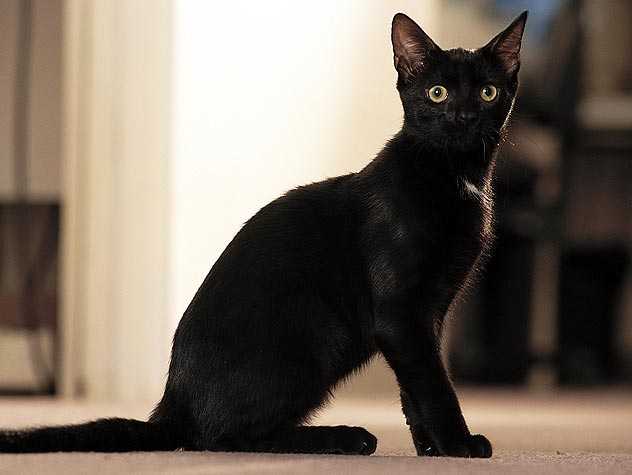A Guide to Cat Body Language

While cats may seem mysterious to some, to others, understanding a cat is simply a matter of paying attention, watching the cat’s body language and responding accordingly. Cats use a variety of ways to communicate their feelings, needs and desires.
How Cats Use Their Tails to Communicate
Watching the position of a cat’s tail is a great way to decipher how a cat is feeling. Marilyn Krieger, Certified Cat Behavior Consultant and Cat Fancy’s behaviorist, shares what different tail positions mean in cat body language.
- Tail up – This is a happy, cheerful cat who is most likely approachable.
- Tail down – This may indicate a cat who is scared or threatened.
- Tail moving rapidly back and forth – A cat’s wagging tail isn’t the same as a dog’s happy tail wagging gesture. “A fast-thumping tail is a good indicator that a cat is agitated and should be left alone,” Krieger says.
- Tail moving slowly back and forth - If a cat is trying to decipher the situation, he may move his tail back and forth slowly as he makes up his mind about how he feels.
- Halloween-cat tail – Yes, cats with Halloween-cat tails are scary! Krieger explains that a cat in this stance is not in a good mood and is trying to appear larger and scarier than he is.
How Cats Use Their Ears to Communicate
Another good way to gauge your cat’s mood is to pay attention to the position of your cat’s ears. The Humane Society of the United States shares tips for deciphering your cat’s ear positions.
- Ears forward – A cat with ears slightly forward is likely feeling content or even playful.
- Ears straight up – When a cat is alert, his ears are likely standing at attention as well.
- Ears turned back – Watch out for this kitty! He might feel irritated over stimulated, so it’s probably a good idea to leave him alone.
- Ears turned sideways or back – This cat is feeling nervous or anxious about something. Use caution around a cat whose ears are in this position.
- Ears back and flat against head – This is a sure sign a cat is scared and feeling defensive. Ears flat against the head may also indicate an angry or aggressive cat. Either way, ears against the head means don’t mess with this guy!
How Cats Use Their Eyes to Communicate
Not only are they beautiful and mesmerizing but a cat’s eyes can offer all kinds of clues about how he’s feeling about the world around him.
- Dilated pupils – Cat behaviorist Pam Johnson-Bennett says a cat’s pupils may dilate when a cat is surprised, scared or stimulated.
- Constricted pupils - Johnson-Bennett warns that constricted pupils might mean your cat is tense or possibly feeling aggressive. “Of course, available light must be taken into consideration,” she says. (Think Like a Cat: How to Raise a Well-Adjusted Cat, Not a Sour Puss)
- Stare – In her book, The Cat Bible, pet expert Tracie Hotchner explains that a stare down is likely a challenge from your cat.
- Slow Blinking – On the flip side, says Hotchner, slow blinking is the opposite of the stare. This indicates your cat feels safe, comfortable and trusts you.
- Half Closed – Hotchner says that droopy lids indicate a relaxed and trusting kitty.
Often a cat will use several forms of body language to display his feelings. Take time to understand your cat’s various ways of communicating and you’ll be able to better decipher his moods and needs.